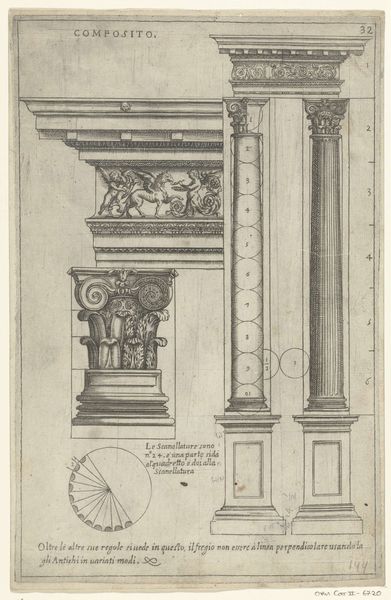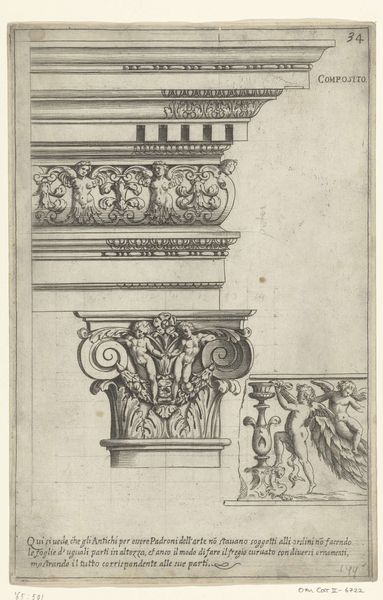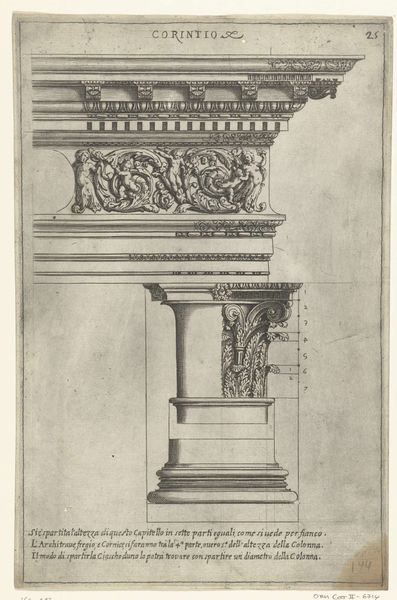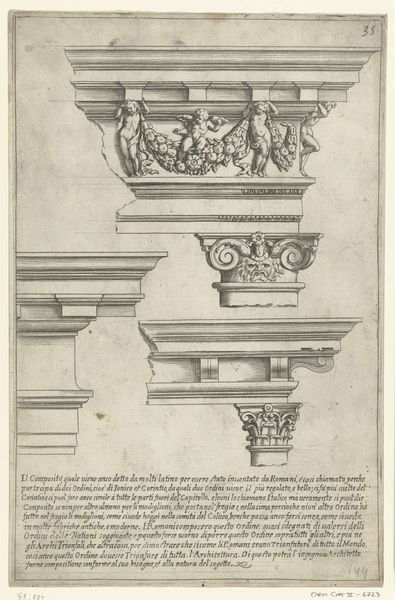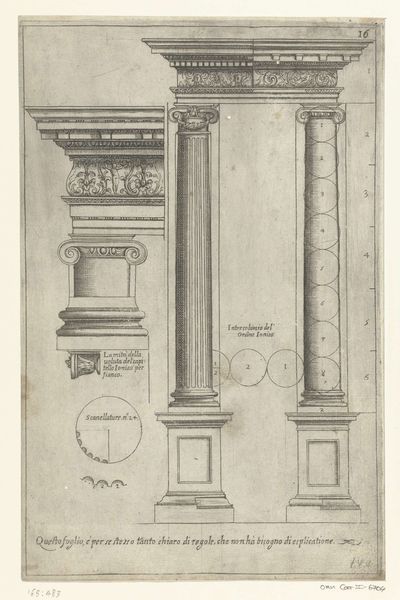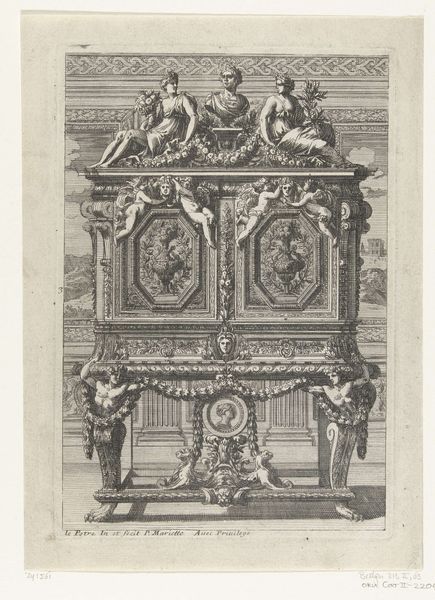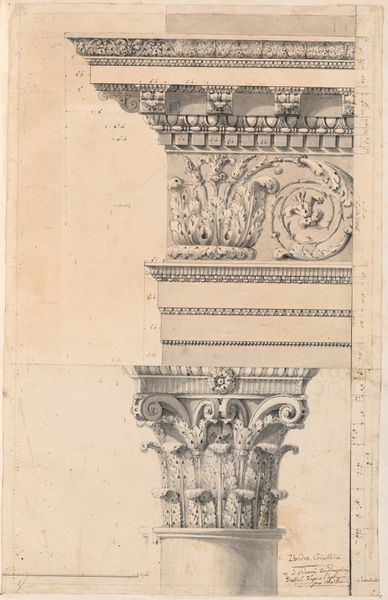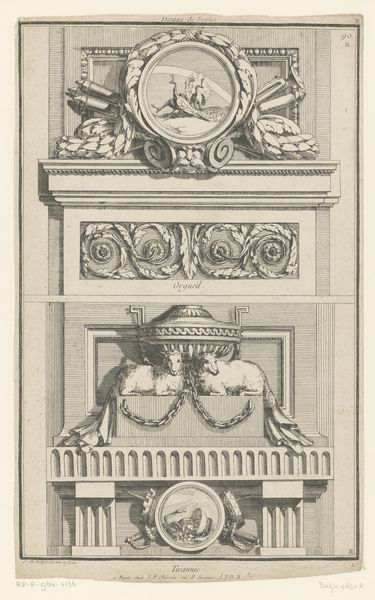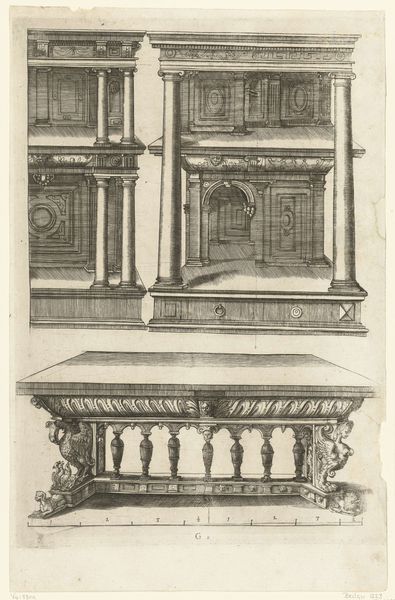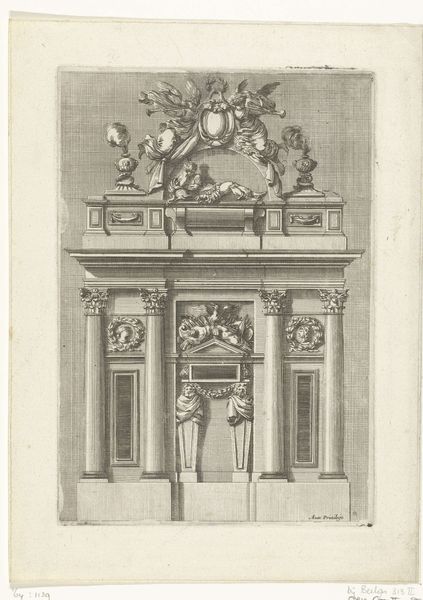
drawing, paper, engraving, architecture
#
drawing
#
paper
#
11_renaissance
#
classicism
#
history-painting
#
engraving
#
architecture
Dimensions: height 275 mm, width 178 mm
Copyright: Rijks Museum: Open Domain
Editor: This is "Ionic Capital, capital and base" an engraving on paper made in 1636, currently held at the Rijksmuseum. It feels very precise, like a technical drawing. What aspects of its composition strike you most? Curator: Immediately, I am drawn to the interplay of line and form. The rigorous, almost mathematical depiction of the architectural elements supersedes any representational purpose; its lines defining volumes that adhere to classical ideals of order and proportion. Editor: Could you expand on that, particularly concerning the “classical ideals”? Curator: Observe the structural clarity: the clear demarcation of the base, the shaft (implied here through the capital), and the entablature. Each part adheres to a strict visual logic. What we see isn’t simply a depiction of an Ionic order, but an exploration of its constituent geometric forms. The engraving style itself lends to this—the precision of the lines allowing for a clarity of form rarely achievable in looser media. Does that resonate with your initial thoughts? Editor: It does! I didn't think about how the medium enforces the classical style. Curator: Indeed. This work is a masterful semiotic exercise: each line, each curve signifies a calculated architectural principle. Through this, it presents us with an abstracted ideal rather than merely a representation of a building component. It asks us to contemplate the inherent forms and their relationships. Editor: I see it now! This conversation made me think differently about engravings! Curator: Excellent. Considering this level of detail really provides a new understanding of formalist representation.
Comments
No comments
Be the first to comment and join the conversation on the ultimate creative platform.



